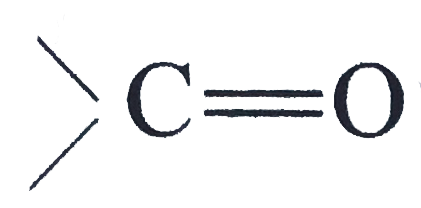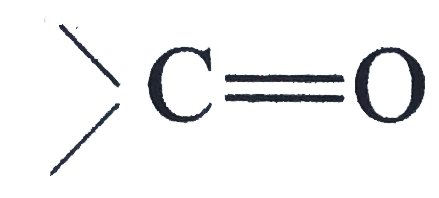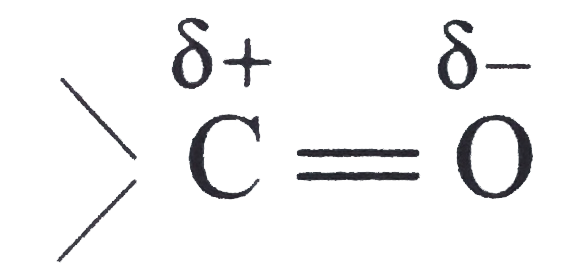Among the given compounds, the most susceptible to nucleophilic attack at the carbonyl group is
MeCOCl
MeCHO
MeCOOMe
MeCOOCOMe
The correct Answer is:A
To determine which compound is most susceptible to nucleophilic attack at the carbonyl group, we need to analyze the electron density around the carbonyl carbon in each of the given compounds. The more electron-deficient the carbonyl carbon is, the more susceptible it will be to nucleophilic attack.
1. Identify the Compounds: The compounds given are:
- (i) CH3C(=O)Cl
- (ii) CH3C(=O)H
- (iii) CH3C(=O)CH3
- (iv) CH3C(=O)O=C(=O)CH3
2. Analyze Each Compound:
- Compound (i) CH3C(=O)Cl: The chlorine atom is highly electronegative and exerts a -I (inductive) effect, pulling electron density away from the carbonyl carbon. This makes the carbonyl carbon more electron-deficient and thus more susceptible to nucleophilic attack.
- Compound (ii) CH3C(=O)H: This compound has a hydrogen atom attached to the carbonyl carbon. Hydrogen does not have a significant electronegative effect, so the carbonyl carbon is less electron-deficient compared to compound (i).
- Compound (iii) CH3C(=O)CH3: Here, both substituents are methyl groups. Methyl groups have a +I effect, which increases the electron density around the carbonyl carbon, making it less susceptible to nucleophilic attack.
- Compound (iv) CH3C(=O)O=C(=O)CH3: This compound has two carbonyl groups. The presence of the adjacent carbonyl group can donate some electron density to the carbonyl carbon, which also reduces its susceptibility to nucleophilic attack.
3. Compare the Susceptibility:
- Compound (i) has the chlorine atom, which significantly reduces the electron density at the carbonyl carbon, making it the most susceptible to nucleophilic attack.
- Compound (ii) is less susceptible than (i) due to the absence of a strong electron-withdrawing group.
- Compound (iii) is even less susceptible due to the electron-donating effect of the methyl groups.
- Compound (iv) has two carbonyls, which also reduces susceptibility due to electron donation.
4. Conclusion: Based on the analysis, the compound that is most susceptible to nucleophilic attack at the carbonyl group is Compound (i) CH3C(=O)Cl.
Final Answer:
The most susceptible compound to nucleophilic attack at the carbonyl group is CH3C(=O)Cl.
- (i) CH3C(=O)Cl
- (ii) CH3C(=O)H
- (iii) CH3C(=O)CH3
- (iv) CH3C(=O)O=C(=O)CH3
- Compound (i) CH3C(=O)Cl: The chlorine atom is highly electronegative and exerts a -I (inductive) effect, pulling electron density away from the carbonyl carbon. This makes the carbonyl carbon more electron-deficient and thus more susceptible to nucleophilic attack.
- Compound (ii) CH3C(=O)H: This compound has a hydrogen atom attached to the carbonyl carbon. Hydrogen does not have a significant electronegative effect, so the carbonyl carbon is less electron-deficient compared to compound (i).
- Compound (iii) CH3C(=O)CH3: Here, both substituents are methyl groups. Methyl groups have a +I effect, which increases the electron density around the carbonyl carbon, making it less susceptible to nucleophilic attack.
- Compound (iv) CH3C(=O)O=C(=O)CH3: This compound has two carbonyl groups. The presence of the adjacent carbonyl group can donate some electron density to the carbonyl carbon, which also reduces its susceptibility to nucleophilic attack.
- Compound (i) has the chlorine atom, which significantly reduces the electron density at the carbonyl carbon, making it the most susceptible to nucleophilic attack.
- Compound (ii) is less susceptible than (i) due to the absence of a strong electron-withdrawing group.
- Compound (iii) is even less susceptible due to the electron-donating effect of the methyl groups.
- Compound (iv) has two carbonyls, which also reduces susceptibility due to electron donation.
The most susceptible compound to nucleophilic attack at the carbonyl group is CH3C(=O)Cl.
Topper's Solved these Questions
- GENERAL ORGANIC CHEMISTRYBook:FIITJEEChapter:GENERAL ORGANIC CHEMISTRYExercise:Section (II) [Jee mains]: With Single Correct Choice
Explore 78 Videos
- GENERAL ORGANIC CHEMISTRYBook:FIITJEEChapter:GENERAL ORGANIC CHEMISTRYExercise:MORE THAN ONE CORRECT CHOICES
Explore 24 Videos
- GENERAL ORGANIC CHEMISTRYBook:FIITJEEChapter:GENERAL ORGANIC CHEMISTRYExercise:SINGLE INTEGER ANSWER TYPE QUESTIONS
Explore 14 Videos
- GASEOUS STATEBook:FIITJEEChapter:GASEOUS STATEExercise:MATCHING LIST TYPE QUESTION
Explore 1 Video
- HYDROCARBONSBook:FIITJEEChapter:HYDROCARBONSExercise:SINGLE INTEGER ANSWER TYPE QUESTION
Explore 9 Videos
Similar Questions
Knowledge Check
Among the given compounds , the most susceptible to nuclephilic attack at the carbonyl group is .
A B
B CH3C−CHOD
CH3C−CHOD
Among the given compounds, the most susceptible to nucleophilic attack at the cabonyl group is:
AMeCOOCOMeBMeCHOCMeCOOMeDMeCOClAmong the given compounds, the most susceptible to nucleophilic attack at the carbonyl carbon is
AMeCOClBMeCHOCMeCOOMeDMeCOOCOMe
The most susceptible compound to nucleophilic attack at the carboyl carbon among the given bellow is
View SolutionWhich of the following compounds is resistant to nucleophilic attack by hydroxyl ion?
View SolutionWhich carbonyl group of the given compound is most reactive for nucleophilic addition reaction ?

View SolutionAldehydes and ketones ar specially susecptible to nucleophilic addition because carbonyl group
 is polar (due to electronegativity difference between carbon and oxygen)
is polar (due to electronegativity difference between carbon and oxygen)

Positive charge on carbon makes it reactive towards the nucleophili. This addition is catalysed by acid.
Reactivity of carbonyl compound towards nucleophilic addition increases with increases in the electron deficiency at carbonyl carbon. Thus, (-I.E.)groups increase while (+I.E.) groups decrease the reactivity of carbonyl compound.
Which among teh following carbonyl compounds is most pola?
View SolutionAldehydes and ketones ar specially susecptible to nucleophilic addition because carbonyl group
 is polar (due to electronegativity difference between carbon and oxygen)
is polar (due to electronegativity difference between carbon and oxygen)

Positive charge on carbon makes it reactive towards the nucleophili. This addition is catalysed by acid.
Reactivity of carbonyl compound towards nucleophilic addition increases with increases in the electron deficiency at carbonyl carbon. Thus, (-I.E.)groups increase while (+I.E.) groups decrease the reactivity of carbonyl compound.
Which among the following is most reactive to give nucleophilic addtion ?
View Solution